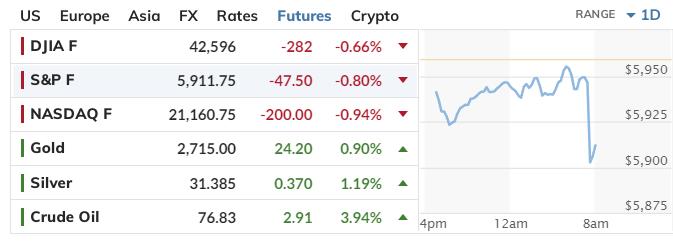🚨 Just In: December Nonfarm Payrolls rise 256,000, blowing past expectations for 164,000.
U.S. Unemployment Rate falls to 4.1%, compared to estimates for 4.2%.
What will Jerome Powell do now? pic.twitter.com/xBJDQee2w7
— Jesse Cohen (@JesseCohenInv) January 10, 2025
The U.S. economy delivered a surprising jolt in December, with Nonfarm Payrolls soaring to an unexpected 256,000, far surpassing the anticipated 164,000 increase. This robust job growth, alongside a drop in the unemployment rate to 4.1% from an expected 4.2%, paints a picture of a labor market that’s not just holding steady but sprinting forward. Yet, the market’s reaction has been anything but celebratory, with stocks taking a nosedive.
This significant leap in employment, with the unemployment rate (UR) at 4.1% against a consensus of 4.2%, signals a labor market tighter than many had predicted. The previous month, November, saw payrolls at 212,000, making December’s numbers even more striking. However, this isn’t just about job numbers; it’s about what they might mean for inflation and monetary policy.

Average Hourly Earnings (AHE) grew by 0.3% month-over-month, in line with expectations but down from November’s 0.4%. While this might suggest some cooling in wage inflation, the broader implications of higher employment and a lower unemployment rate are clear: more people with jobs, more money circulating, and potentially, more pressure on prices.
The bond market responded with a significant uptick, pushing the yield on the 30-year bond to 4.99%, hinting at expectations of inflation. With bond yields climbing, there’s a palpable fear that we might see them hit 5% either today or next week. This isn’t just a number; it’s a warning sign. Are we witnessing the resurgence of inflation, or is this just a blip on the radar?
These figures have sparked a conversation about the Federal Reserve’s next moves. With such robust job growth, the argument for continuing or even increasing interest rates to combat inflation becomes stronger. The Fed’s challenge will be balancing this with the market’s current volatility, where good economic news seems to translate into bad news for investors, fearing tighter policy and higher borrowing costs.
Markets selling off as the US economy once again show strength with this latest jobs report.
Big payrolls beat, coupled with a decline in unemployment (U6 in particular).
At least wage growth fell back to 0.3% after four months of 0.4%.
Good news is bad news as far as markets… pic.twitter.com/kuRdRFWZgi
— Joshua Mahony (@JoshuaMahony) January 10, 2025
10 year yield jumps to 4.78% 😳😳
Wen 5%? pic.twitter.com/AVP2bCNO3v
— QE Infinity (@StealthQE4) January 10, 2025
Sources:
https://www.marketwatch.com/investing/bond/tmubmusd10y?countrycode=bx&mod=home-page
https://www.usatoday.com/story/money/2025/01/10/december-jobs-report-data/77587451007/
0 views